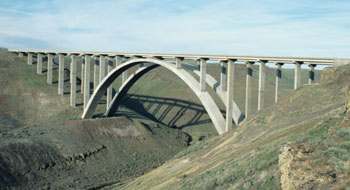

The past decade has seen dramatic growth in the number of institutional investors that have added infrastructure to their asset allocation strategies. Changes to pension regulatory and accounting rules have been one catalyst prompting many investors to seek assets that better match their long-term liabilities. Other drivers include concerns regarding where inflation is headed and a desire for better diversification of investment risk.
Institutional investors—particularly in Canada, Europe and Australia—have been early, active investors in infrastructure, and many are recognized as global leaders in this regard. A number of these investors have targeted significant allocations of 5% to 10% to infrastructure.
For the institutional investor, infrastructure is attractive due to some key attributes of the asset class:
• the potential for stable, predictable cash flows that are often linked to inflation;
• long asset lives that may be more closely matched to an investor’s long-term liabilities; and
• the potential for diversifying returns that have a low correlation with other assets.
The challenge for investors, however, is finding the right mix of infrastructure assets that will deliver returns that are consistent with their investment objectives. Whether its on a direct basis or through funds, investors must have a deep understanding of the return behaviour and risk profile of different infrastructure assets—even those that may, at first blush, appear very similar.
Investors may make a number of general assumptions when reviewing infrastructure opportunities. But in reality, it is an extremely diverse asset class with many nuances. The key is crafting a portfolio of direct infrastructure assets or funds that will deliver a risk/return profile suited to their needs.
Defining by Revenue Model
While infrastructure assets typically share a number of the key attributes described above that make them particularly attractive to institutional investors, there are also important differences among various assets and categories of assets. These vary by users, mode of regulatory control, revenue models and risk profile. A helpful starting point with infrastructure is to think about the assets in categories based on the following revenue models.
Throughput Assets – Toll roads and ports are examples of these types of assets, for which a user typically pays a fee. The assets often benefit from a stable revenue stream but may be subject to user demand risk, which may fluctuate over business cycles.
Contracted Utility Assets – These typically privately held assets are often operated via a long-term contract with a government or private entity. Contracts underpinning the provision of these assets tend to be long term and clearly identify predictable revenue streams to match the long life and monopolistic nature of infrastructure assets.
Regulated Utility Assets – These assets provide essential services such as power and water. Prices and terms are determined by a regulating body that sets a “fair” return. Traditionally, inflation is one of the factors considered in rate-setting formulas used by regulators, thereby providing a potential inflation hedge for asset owners.
Availability Payment/Social Assets – These include assets such as schools, hospitals and courthouses. They are typically paid for by a government entity, which enters into an “availability payment” contract with a private sector owner/operator, whereby the government pays the owner/operator for making the asset available for use—subject to certain quality of service provisions. Social infrastructure assets generally do not subject owners to user demand risk.
Read Fields of Dreams to learn about factors that will impact an asset’s risk profile.
Nancy Mangraviti is a managing director with the infrastructure investment group of RBC Global Asset Management.
